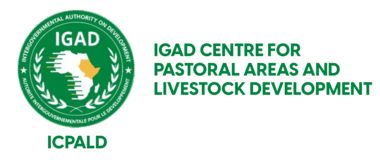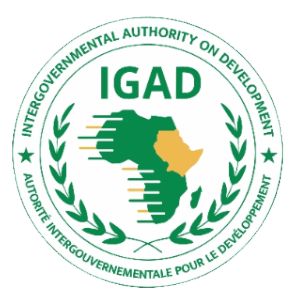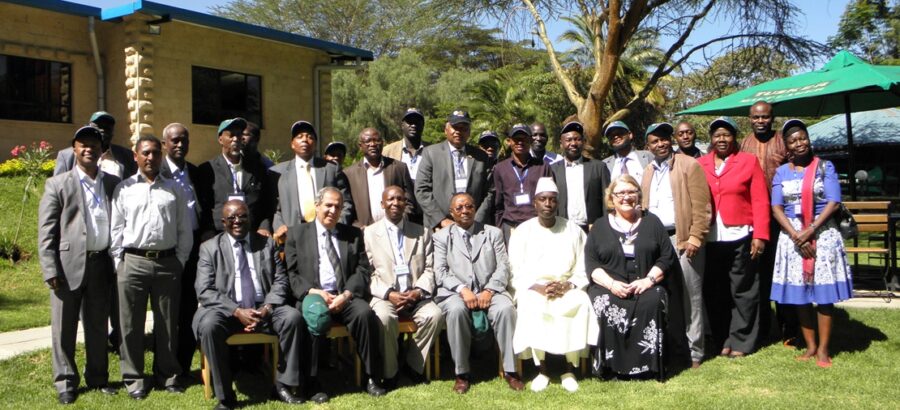The AU-IBAR and IGAD through Surveillance of Trade Sensitive Diseases (STSD) Project organized Experience Sharing Tour to Namibia from 10th to 16th May 2015. The relevant units and departments were represented from all IGAD Member states
The main sectors that contribute to Namibian economy include Mining, Fishing, Tourism and Agriculture. The biggest employer is Agriculture (46%) where livestock sector contributes 75% of the total agricultural output. There are about 2.5 million cattle, 2.9 million sheep and 2.1 million goats in the country. The common breeds available are; Brahman, Simmental, Nguni, Bousmar and crosses for beef; for goat meat, the main one is Boer breed. Most of the output from the livestock sector is exported to European Union and South Africa. There is also a production of some game meat mainly for local consumption.
OBJECTIVES
The overall objective of the tour was to gain experience and lessons from the LITS practices in Namibia that can be adaptable to IGAD member states
The organizations/actors visited
The FAN Meat (Farm Assured Namibia Meat) – FAN Meat implemented via a joint initiative of the MBN/DVS (administered by MBN). Currently three sub-divisions under the FAN Meat Office at Meat Board: a Stock Brands Office, Ear Tag Office and Nam LITS Helpdesk (data capture unit). The other important actors include abattoir operators (export and local abattoirs), meat board, directorate of Veterinary Services, Auctioneers, Ranchers, communal farmers (small), feedlot operators, transporters and law enforcers
The main Lessons
Namibia has established a system for identification and registration of cattle, sheep, goats and pigs in accordance with the provisions of the Animal Identification Regulations: Animal Health Act, Act 1 of 2011 and No. 29 Animal Identification Regulations: The Namibian Livestock Identification System (NamLITS) comprise four elements, namely: means of identification to identify each animal (cattle) and batches of animals (sheep, goats and pigs), maintaining up-to-date registers kept on each holding, movement control and monitoring system using veterinary permits and a central computerized database. From October 2010, it has been a requirement in terms of the Animal Identification Regulations to identify cattle by means of two ear tags, a Radio Frequency Identification (RFID) ear tag on the left ear and a conventional plastic ear tag on the right ear by the age of six (6) months or earlier when the animal is removed from its holding of birth
Animal Identification Regulations underpins livestock identification, registration, movement control and tracing to enable the effective surveillance, control and eradication of animal disease, particularly transboundary animal diseases north of the Veterinary Cordon Fence (nVCF) and to facilitate access of red meat and red meat products to high value markets including the European Union (EU) through transparent traceability of the animals and food products made from them.
The delegation also visited the largest feedlot in Namibia, owned by Meatco. During the visit period, it held 8,500 steers. The farm procures animals from various auctions and farms within the FMD free areas in the Country. Animals stay for at least 40 days before slaughter. The animals gain on average 1.25Kg/day. Disease surveillance and control is under the DVS. The farm also sends samples to private laboratory for comparison of results. The farm feed their animals with Total Mix Ratio made on farm.
Documents/notices that support traceability system in Namibia; Animal registration cards, Cattle movement notice, Ear tag retirement or termination notice, Ear tag replacement notice, Slaughter notices, Isolation camp notices, Quarantine notices and Notification to keep designated animals
Observations /recommendations /actions
- It was observed that the regional/IGAD / LITs guideline validated has captured the relevant tools/devices/elements and lessons we have observed in Namibia. We need to aggressively work with member states (MS) on sensitization and awareness creation of policy makers, livestock keepers and traders for timely buy-in and investment
- The Role of private sector play major in adoption and implementation of LITS
- LITS to support national policies and activities on livestock productivity, market access, food safety and cattle tracking technology as a deterrent against livestock theft.
- The regional /IGAD/LITs forum in collaboration with partners need to encourage and support member states to have dedicated LITS unit under the DVS or strengthen with manpower and relevant capacity
- Need to review and develop legal framework and polices to support LITS implementation in the IGAD MS. When the regional LITS framework draft ready, IGAD/ICPALD facilitate validation by MS and share to MS for adaptation to their condition
Reporting officers: Dr. Ameha Sebsibe and Dr. Solomon Munyua






